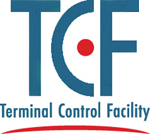| |
Terminal Control Facility

Terminal Control Facility (TCF) logs and saves information about terminal usage for months, even years.
This makes TCF the ideal choice for system managers, users, auditors and others who want complete control of their HP Himalaya
system and who wish to monitor and log incorrect and unauthorized use of the system.
TCF works as an intermediary between the terminals and the HP Himalaya's command interpreter TACL.
TCF will survey and log all communication between the terminal/user and the command interpreter.
Features of TCF:
Terminal Surveillance
Users can monitor who is logged on, and I/O to and from the terminal.
On Demand Sessions
Sessions created via TCP/IP and Multilan can be monitored.
Static Sessions
The control and monitoring of static terminals such as the Pathway terminal, or permanently defined TACL terminals.
Terminal Operations
Start and abort as well as forced autologoff of terminals.
Hometerm Emulation
His
allows applications that use terminal or console devices
for event and error message reporting to be logged to
TCF, with the option of logging those messages as EMS
events. The TCF monitor emulates various physical devices
such as the Compaq Himalaya 6530 console.
Terminal Operations
Start and abort as well as forced autologoff of terminals.
Autologoff Inactive Terminals
Can be defined to individual user level or group level.
Broadcast
Allows the user to broadcast messages between specific users or terminals.
Reports
Various reports can be produced, using the TCF logfiles,
including users, terminals, time, commands and responses.
Logging User Activities
User activity is logged by following a defined user
profile. This is important to most HP Himalaya users,
not only to those responsible to DP departments but
also to ordinary users, in order to prove exactly what
has been accomplished after a user such as Super.Super
has been logged on. TCF logs the following information:
Date/time
User name
Terminal name
Subsystems and programs that the user is using
User commands
The program and subsystem responses
 Please, find
additional information about TCF
Please, find
additional information about TCF
|
|
